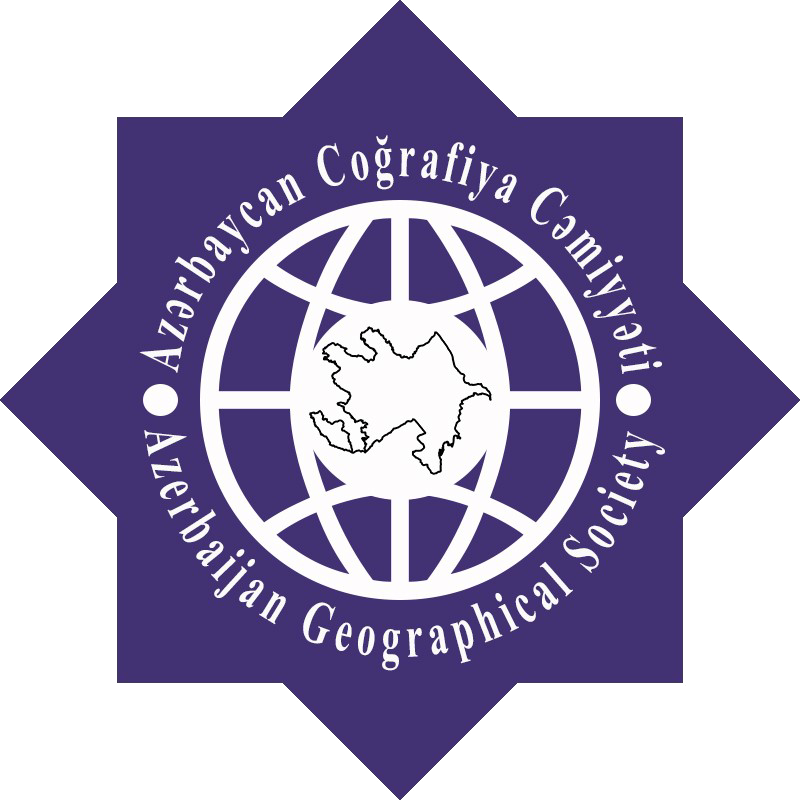YÜKSƏK AYIRDETMƏLİ PEYK ŞƏKİLLƏRİNIN MƏKAN HƏLLİNİN İNKİŞAFI ÜÇÜN SEGMENTASİYANIN KEYFİYƏT XÜSUSİYYƏTLƏRİNİN QİYMƏTLƏNDİRİLMƏSİ
T.Kavazoğlu, H.Tonbul
Xülasə. Uzaqdan görünüşlərin mürəkkəb xarakterinə görə, mənzərə obyektlərini seqmentləşdirməklə onların dəqiq təsvirini qurmaq çox çətindir. Parametrlərin seçilməsi, xətlərin sıxlığı, spektral imkanları, məkan və quruluş məlumatları daxil olmaqla bir çox faktor yaradılacaq seqmentlərin keyfiyyətinə təsir göstərdiyindən, yüksək keyfiyyətli görüntü obyektlərinin təmin olunması üçün hərtərəfli analizin aparılması tələb olunur. Bu tədqiqatda Worldview-2 peyk modelindən istifadə etməklə beş müxtəlif (0.5, 2, 4, 8, 16 metr) məkan imkanlarının segmentasiyanın keyfiyətinə təsiri təhlil edilmişdir. Bu işdə segmentasiya prosesləri üçün çoxhəlli seqmentləşdirmə alqoritmi ən geniş istifadə edilən metod və eCognition proqramında mövcud olmuşdur. Məkan imkanlarının seqmentasiya keyfiyyətinə təsiri 3 fərqli torpaq istifadəsi / örtü sahəsi, əhatə dairəsi, sahənin indeks keyfiyyət göstəricilərindən istifadə edərək tikinti, otlaq torpaqları və yollar üçün tədqiq edilmişdir. Müşahidə olunmuşdur ki, 0,5 ilə 2, 4, 8, 16 metrdən təkrar istifadəsi seqmentləşdirmə nəticələrinin keyfiyyətini əhəmiyyətli dərəcədə azaldır. Məsələn, yol bölmələri üçün məkana görə həledilmə 8-dən 16 metrəyə gədər məsafənin artması keyfiyyət göstəricilərini təxminən 77% azaldır. Bu tədqiqarların nəticələrinə görə, həlletmə icazəsi 4 və ya daha çox olanda (yəni 0,5 və 2 metr) seqment göstəriciləri baxımından onların istifadə edilməsi məqbul nəticələr verəcəkdir. Aşağı həll edilməyə üstünlük verildikdə, seqmentlərin keyfiyyəti əhəmiyyətli dərəcədə azalır, buna görə yaradılmış görüntü obyektləri çoxmiqyaslı olur və bu da deseqmentləşdirmənin artımını göstərir.
ƏDƏBİYYAT
1. Baatz, M., Schape, A., 2000, Multiresolution Segmentation: An Optimization Approach for High Quality MultiScale Image Segmentation. Strobl, J., Blaschke, T. and Griesbner, G. (Ed.), Angewandte Geographische Informations- Verarbeitung, XII, Wichmann Verlag, Karlsruhe, Germany, 12-23.
2. Cheng, J., Bo, Y., Zhu, Y., Ji, X., 2014. A novel method for assessing the segmentation quality of high-spatial resolution remote-sensing images. International Journal of Remote Sensing 35 (10), 3816–3839.
3. Clinton, N., Holt, A., Scarborough, J., Yan, L., Gong, P., 2010. Accuracy Assessment Measures for Object-based Image Segmentation Goodness. Photogrammetric Engineering & Remote Sensing 76 (3), 289–299.
4. Drăgut, L., Csillik, O., Eisank, C., Tiede, D., 2014. Automated Parameterisation for Multi- Scale Image Segmentation on Multiple Layers ISPRS Journal of Photogrammetry and Remote Sensing, 88 (100), 119–127.
5. Johnson, B., Xie, Z., 2011. Unsupervised image segmentation evaluation and refinement using a multi-scale approach. ISPRS Journal of Photogrammetry and Remote Sensing 66, 473-483.
6. Kavzoglu, T. 2017. Object-Oriented Random Forest for High Resolution Land Cover Mapping Using Quickbird-2 Imagery, Handbook of Neural Computation, pp. 607-619, pg. 658, ISBN: 9780128113196, Amsterdam: Elsevier.
7. Kavzoglu, T., Yildiz Erdemir, M., Tonbul, H., 2017. Classification of semiurban landscapes from very high resolution satellite images using a regionalized multiscale segmentation approach. Journal of Applied Remote Sensing, 11 (3), 035016.
8. Kavzoglu, T., Tonbul, H., 2018, An Experimental Comparison of Multi-Resolution Segmentation, SLIC and K- Means Clustering for Object-Based Classification of VHR Imagery. International Journal of Remote Sensing, (published online), doi.org/10.1080/01431161.2018.1506592.
9. Kim, M., Madden, M., Warner., T. A., 2009. Forest Type Mapping Using Object-specific Texture Measures from Multispectral IKONOS Imagery: Segmentation Quality and Image Classification Issues. Photogrammetric Engineering & Remote Sensing, 75 (7), 819–829.
10. Kim, M., Warner, T.A., Madden, M., Atkinson, D.S., 2011. Multi-scale GEOBIA with very high spatial resolution digital aerial imagery: scale, texture and image objects. International Journal of Remote Sensing 32 (10), 2825–2850.
11. Lenarčič, Š.A., Ritlop, K., Duric, N., Cotar, K., Oštir, K., 2015. Impact of spatial resolution on correlation between segmentation evaluation metrics and forest classification accuracy, Proceedings of SPIE – The International Society for Optical Engineering, pp. 9643,96430T.
12. Lucieer, A., Stein, A., 2002. Existential Uncertainty of Spatial Objects Segmented from Satellite Sensor Imagery. IEEE Transactions on Geoscience and Remote Sensing 40, 2518–2521.
13. Mesner, N., Oštir,K., 2014. Investigating the impact of spatial and spectral resolution of satellite images on segmentation quality. Journal of Applied Remote Sensing 8, 083696–083696.
14. Neubert, M., Herold, H., Meinel, G., 2006. Evaluation of remote sensing image segmentation quality–further results and concepts. The International Archives of the Photogrammetry, Remote Sensing and Spatial Information Sciences, vol. XXXVI, no. 4/C42, pp. 6-11, 2006.
15. Winter, S., 2000. Location Similarity of Regions. ISPRS Journal of Photogrammetry and Remote Sensing 55 (3), 189–200.
16. Zhang, Y. J., 1996. A Survey on Evaluation Methods for Image Segmentation. Pattern Recognition 29 (8), 1335–1346.
17. Zhang, H., J., Fritts, E., Goldman, S. A., 2008. Image Segmentation Evaluation: A Survey of Unsupervised Methods. Computer Vision and Image Understanding 110, 260–280.
18. Zhang, L., Li, X., Yuan, Q., Liu, Y. 2014. Object-based approach to national land cover mapping using HJ satellite imagery. Journal of Applied Remote Sensing 8, 083686
